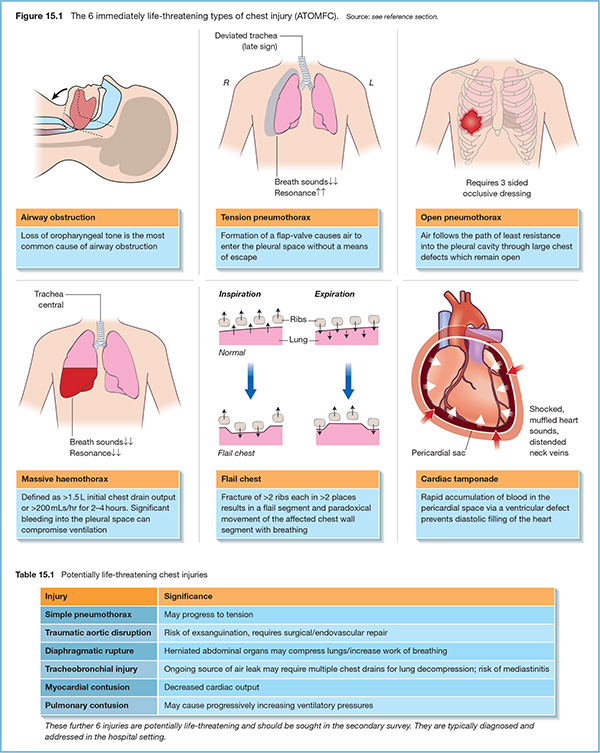15 Thoracic injury is a contributing factor in over half of all patients dying from trauma, with RTCs accounting for over 80% of all chest trauma sustained. Mortality in isolated chest trauma is in the region of 4–8%; however, the high energy impacts associated with thoracic injury in RTCs often affect additional multiple organ systems, in which case mortality increases to 35%. Early recognition of chest injury is therefore of paramount importance in management of the trauma patient. However, patients in the pre-hospital phase rarely demonstrate the classic textbook signs associated with each of the specific pathologies, as injuries are seen in the early phase and are hence still evolving. Further, in the noisy pre-hospital environment, examination findings such as resonance and air entry are often too subtle for detection. A high index of suspicion must be applied to patients with potential chest trauma, aided by knowledge of kinematics and mechanisms of chest injury. An awareness of the importance of reading the scene in predicting injuries is thus crucial. There are 12 distinct life-threatening thoracic injuries, known collectively as the ‘deadly dozen’; six are immediately life-threatening, and six potentially life-threatening. In each case, general principles of management are directed at: Conventional wisdom dictates that there are six immediately life-threatening, but reversible, types of chest injury. These are often remembered using the mnemonic ATOMFC. One in eight UK trauma patients have either partial or complete airway compromise at the point of admission to hospital.
Life-threatening chest trauma

General principles of management
Immediately life-threatening chest trauma
Airway obstruction
![]()
Stay updated, free articles. Join our Telegram channel

Full access? Get Clinical Tree








